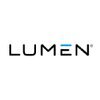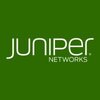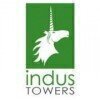Filter interviews by
Sterlite Technologies Production Graduate Engineer Trainee Interview Questions and Answers
Sterlite Technologies Production Graduate Engineer Trainee Interview Experiences
1 interview found
Production Graduate Engineer Trainee Interview Questions & Answers
posted on 24 Nov 2024
I applied via Campus Placement and was interviewed before Nov 2023. There was 1 interview round.
(4 Questions)
- Q1. Explain what is OOPs
- Ans.
OOPs stands for Object-Oriented Programming, a programming paradigm based on the concept of objects.
OOPs focuses on creating objects that contain data and methods to manipulate that data.
Encapsulation, inheritance, and polymorphism are key principles of OOPs.
Examples of OOPs languages include Java, C++, and Python.
- Q2. Data structures in C++
- Ans.
Data structures in C++ are used to store and organize data efficiently.
Data structures like arrays, linked lists, stacks, queues, trees, and graphs are commonly used in C++ programming.
Arrays are used to store a collection of elements of the same data type.
Linked lists are used to store elements in a linear order.
Stacks follow the Last In First Out (LIFO) principle.
Queues follow the First In First Out (FIFO) principle.
...
- Q3. Types of inheritence in oops
- Ans.
Types of inheritance in OOPs include single, multiple, multilevel, hierarchical, and hybrid inheritance.
Single inheritance: A class inherits from only one base class.
Multiple inheritance: A class inherits from more than one base class.
Multilevel inheritance: A class inherits from a class, which in turn inherits from another class.
Hierarchical inheritance: Multiple classes inherit from a single base class.
Hybrid inherit...
- Q4. Explain your project.
- Ans.
My project focused on optimizing the production process of a manufacturing line to enhance efficiency and reduce waste.
Process Mapping: I created detailed flowcharts to visualize the production steps, identifying bottlenecks and areas for improvement.
Lean Manufacturing: Implemented lean principles, such as 5S, to organize the workspace, which led to a 20% increase in productivity.
Data Analysis: Collected and analyzed p...
Interview Preparation Tips
- OOPS
- DSA
In Depth Any language which you prefer java/c++/c
Skills evaluated in this interview
Top trending discussions






Interview questions from similar companies

I applied via Campus Placement and was interviewed in Aug 2022. There were 5 interview rounds.

Very basic round where you just need to use your logic in apti.
Only one code was given to run and that was from basic dsa
(2 Questions)
- Q1. Question related to Computer Networking
- Q2. Question related to your project, resume and wireless networks
(1 Question)
- Q1. It was merely a phone call where they asked my info and how the interview went.
Interview Preparation Tips

I applied via Naukri.com and was interviewed before Apr 2023. There was 1 interview round.
(2 Questions)
- Q1. 1m3 concrete use cement
- Ans.
1m3 of concrete typically requires about 300-400 kg of cement, depending on the mix design and application.
Standard concrete mix uses approximately 300 kg of cement per cubic meter.
For high-strength concrete, up to 400 kg of cement may be used.
The water-cement ratio affects the amount of cement needed; lower ratios require more cement.
Example: A typical mix for structural applications might be 1:2:4 (cement:sand:aggreg...
- Q2. 1sqm2 plaster use cement kg
- Ans.
The amount of cement needed for plastering 1 sqm varies based on mix ratio and thickness.
Standard plaster mix ratio is 1:4 (cement:sand).
For 1 sqm at 12mm thickness, approximately 8-10 kg of cement is needed.
Higher thickness or different mix ratios will increase cement requirement.
Example: For a 1:6 mix, you may need around 6-8 kg of cement per sqm.

I applied via Campus Placement
Questions from trains, water taps
Min letters to delete to make a string palindrome

Interview Questionnaire
23 Questions
- Q1. Bill of material of 1 KM 11 KV line
- Ans.
The bill of material for a 1 KM 11 KV line includes various components such as conductors, insulators, transformers, and poles.
Conductors: Copper or aluminum cables used to transmit electricity.
Insulators: Materials like porcelain or polymer used to support and isolate the conductors.
Transformers: Devices used to step up or step down the voltage.
Poles: Structures to support the conductors and maintain their position.
Ot...
- Q2. Bill of material of 1 KM AB cable line
- Ans.
The bill of material for a 1 KM AB cable line includes various components.
The cable itself
Insulators
Connectors
Poles or towers
Grounding equipment
Hardware such as bolts and clamps
Tools for installation
Safety equipment
Transportation costs
Labor costs
- Q3. Bill of material of 1KM underground line 33 KV ,11,KV,LT lines
- Ans.
The bill of material for a 1KM underground line with 33KV, 11KV, and LT lines.
The bill of material should include all necessary components for the underground line.
Components may include cables, transformers, switchgear, and other electrical equipment.
The quantity of each component should be specified in the bill of material.
The bill of material should also include any necessary accessories such as clamps, connectors, ...
- Q4. Testing commissioning of RMU ,relay setting
- Ans.
Testing and commissioning of RMU and relay setting is a crucial aspect of project engineering.
Testing and commissioning of RMU involves verifying the functionality of the switchgear and ensuring it is safe for operation.
Relay setting involves configuring the protection relays to ensure they operate correctly in the event of a fault.
Testing and commissioning should be carried out in accordance with relevant standards an...
- Q5. Transformer earthing
- Q6. What is lightning arrestor
- Ans.
A lightning arrestor is a device used to protect electrical equipment from lightning strikes.
It is also known as a surge arrester or lightning diverter.
It works by providing a low-impedance path for lightning current to flow to the ground.
It is commonly used in power distribution systems, telecommunication networks, and buildings.
Examples include metal oxide varistors, gas discharge tubes, and carbon block arrestors.
- Q7. Soil conductivity test
- Q8. Transformer testing
- Q9. ACSR conductor testing ABC testing Pannel testing Structure testing
- Q10. Earthing Earthing of transformer Earthing of lightning arrester Earthing of sub station Earthing of single pole Earthing of pannels
- Q11. What is discharge rods
- Ans.
Discharge rods are grounding devices used to discharge static electricity from equipment or machinery.
Also known as grounding rods or earthing rods
Typically made of copper or aluminum
Used in industries such as oil and gas, chemical, and manufacturing
Prevents damage to equipment and potential safety hazards
Example: Discharge rods are commonly used in refineries to prevent explosions caused by static electricity buildup.
- Q12. Size of conductors Size of cables
- Ans.
The size of conductors and cables is an important factor in determining their electrical properties and performance.
The size of a conductor is determined by its cross-sectional area, which affects its resistance and current-carrying capacity.
Cable size is determined by the current it needs to carry and the distance it needs to travel.
Larger conductors and cables can carry more current and have lower resistance, but may...
- Q13. What is GTP What is MQP What is FQP
- Ans.
GTP is a protocol used in cellular communication. MQP and FQP are not commonly used acronyms.
GTP stands for GPRS Tunnelling Protocol
It is used in cellular communication to allow data transfer between different networks
MQP and FQP are not commonly used acronyms and may refer to specific organizations or products
- Q14. Transformer oil testing
- Q15. Cable insulation testing Continuity testing High pot test
- Q16. What is HDD machine
- Ans.
HDD machine is a drilling machine used for horizontal directional drilling.
HDD stands for Horizontal Directional Drilling
It is used for underground drilling without disturbing the surface
It is commonly used for laying pipelines, cables, and conduits
The machine uses a drill stem and a drilling fluid to bore through the ground
It requires skilled operators and engineers to operate and plan the drilling process
- Q17. PSC pole STP pole RS joist pole Rail pole
- Q18. HDPE PIPE GI PIPE PLB duct
- Q19. Chemical earthing Electrical earthing
- Q20. Jointing of cables Jointing of conductors
- Ans.
Jointing of cables and conductors is a crucial aspect of project engineering.
Jointing involves connecting two or more cables or conductors to ensure continuity of electrical flow.
Various methods of jointing include crimping, soldering, and welding.
Factors such as the type of cable, voltage, and current capacity must be considered when selecting a jointing method.
Proper insulation and sealing of joints is essential to p...
- Q21. Tell me about yourself
- Ans.
Experienced project engineer with a background in civil engineering and a passion for problem-solving and team collaboration.
Bachelor's degree in Civil Engineering
5+ years of experience in project management
Proficient in AutoCAD and project management software
Strong communication and leadership skills
Successfully led a team in completing a major infrastructure project on time and within budget
- Q22. Previous company and project details
- Q23. Salary discussion
Skills evaluated in this interview

Interview Questionnaire
3 Questions
- Q1. Why do you want to join this company?
- Ans.
I am excited to join this company because of its reputation for innovation and commitment to employee growth.
I am impressed by the company's track record of developing cutting-edge software solutions.
I appreciate the emphasis on professional development and growth opportunities for employees.
I am excited about the prospect of working with a talented and dedicated team.
I believe that this company's values align with my ...
- Q2. Who is your role model?
- Ans.
My role model is Elon Musk.
I admire his innovative thinking and determination to push boundaries.
His ability to lead multiple successful companies is inspiring.
His focus on sustainable energy and space exploration aligns with my values.
I strive to emulate his work ethic and passion for making a positive impact on the world.
- Q3. What extra-curricular activities have you been involved in?
- Ans.
I have been involved in various extra-curricular activities such as volunteering, sports, and music.
Volunteered at local animal shelter
Played on intramural basketball team
Participated in school choir
Attended coding workshops and hackathons
Interview Preparation Tips
Experience: I consulted my seniors for preparation of my resume. I believe that seniors provide the best possible insights in this regards. I had a standard resume for all the companies.
Round: Test
Experience: I had prepared for the CAT examination which helped me in these written tests. The first round was the written test. The criterion for the written test was to have a CGPA more than 6.0. There was an aptitude test and a technical test. The technical test consisted of programming questions based on C++ and data structures. From data structures they asked a lot questions based on tree traversals and from C++. A large number of questions from pointers and arrays were also asked.
The aptitude test was slightly easier than the CAT examination standards. Majority of the questions were related to data interpretation and some were of based on logical reasoning. The total duration of the both the tests combined was 90 minutes.
Around 50 people appeared for the first round and nearly 13 got shortlisted for the next round.
Tips: For the written tests, particularly the aptitude section, if would really help if you have prepared for the CAT examination. There is a book written by an author named R.S. Agarwal which would prove to be beneficial from the point of view of these written tests.
Duration: 90 minutes
Round: Group Discussion
Experience: I did not prepare much for the GD’s. However I did keep myself abreast with certain latest happenings.There were no group activities conducted in the recruitment process of Century Link.
Round: HR Interview
Experience: For HR interviews I prepared answers to some frequently asked HR questions. I found these questions on the internet. Generally the questions asked in the interviews are related to the profile on offer; for instance in A2Z interview I was asked a lot of questions from power systems since it was a core company and in Century Links I was asked questions from C++ and data structures since they had come to recruit for a software engineering profile.
Round: Technical Interview
Experience: In this interview I was questioned on my C++ and data structure knowledge. They asked me questions on pointers and further asked me to explain the concept of dangling pointers. They did not want me to write down the complete code with proper syntax's of the problems asked to me. They only asked me to write the algorithms of the various problems.
They also asked me some puzzles. Unfortunately, I was not able to solve any of them. During the course of the interview they asked me to specify the reason for my keen interest in joining an IT company.
At the end of first interview some candidates were shortlisted and called for the second round of interview.
Round: Technical Interview
Experience: The second interview was conducted by a senior company official. He enquired about my project and again, like in the first interview, asked me to state the reason for my interest in joining an IT company.This interview round was an elimination round.
Round: HR Interview
Experience: The interview was an HR interview. Candidates who reached till this interview were all selected; basically this interview was like a formality to check the candidate’s fit with the company.
College Name: IIT ROORKEE
Motivation: I had never heard of the company before the recruitment season. I attended the PPT organised by the company, I found the company to be a well reputed/established company and thus applied to it. The profile was open for Electrical, Computer Science, Mechanical and Electronics engineering students.

I appeared for an interview before Jan 2016.
Interview Questionnaire
7 Questions
- Q1. Give a brief description about your education, past job profile and other questions.
- Q2. Why did you quit your last organization after just 2.5 years?
- Ans.
Seeking new challenges and growth opportunities.
I felt that I had reached a plateau in my role and was no longer being challenged.
I was interested in exploring new technologies and wanted to work on more innovative projects.
I wanted to work in a more collaborative and dynamic environment.
I left on good terms and have maintained positive relationships with my former colleagues.
I am excited to bring my skills and experie...
- Q3. Why do you want to join Centurylink?
- Ans.
I am excited to join Centurylink because of their reputation for innovation and commitment to customer satisfaction.
Centurylink has a strong focus on developing cutting-edge technology solutions
The company values customer feedback and strives to provide excellent service
I am impressed by Centurylink's dedication to diversity and inclusion in the workplace
- Q4. Why did you relocate to Noida?
- Ans.
Relocated to Noida for better career opportunities and growth.
Noida is a hub for IT companies and offers a lot of job opportunities in the software development field.
The city has a good work-life balance and a lower cost of living compared to other metropolitan cities.
I was also attracted to the diverse culture and the opportunity to work with people from different backgrounds.
I did my research and found that Noida has...
- Q5. Are you ok to work in US shift?
- Ans.
Yes, I am comfortable working in US shift.
I have prior experience working in US shift.
I am flexible with my work timings.
I understand the importance of meeting project deadlines.
I am willing to adjust my personal schedule to accommodate work requirements.
- Q6. Where do you put up?
- Ans.
I currently reside in New York City.
I live in an apartment in Manhattan.
My neighborhood is known for its diverse food options.
I have easy access to public transportation.
I enjoy exploring the city in my free time.
- Q7. Solve 12 Mainframe Puzzles
Interview Preparation Tips
Experience: I told them all about the previous companies and my past job profile as a Mainframe Developer.
I gave a valid reason for quitting the previous company.
I cited that the reason to relocate to Noida was my wedding.
I was not okay to work in shifts, hence I denied.
I was putting up in Noida itself back then.
Round: Puzzle Interview
Experience: I was given a list of 12 Mainframe puzzles with questions from Cobol, DB2 and JCL.
I could solve 8 of them correctly.
Tips: Prepare puzzles as they give just 1 minute per question and not more.

Interview Preparation Tips
Experience: Was accepted through the pre placement offer after a satisfactory internship during the summer.
There was a small test after the internship. Work done in the internship in co-ordination with mentor, employees and manager has more weight-age.
General Tips: Just brush up on your fundamentals. The questions asked will just be a direct or indirect applications of what you have learnt. Good programming practice is also needed.
Good knowledge about Operating systems, Data structures, Networking and Programming is what they generally look for while hiring.
A good internship project helped in securing the PPO.
Skills:
College Name: NIT Surathkal

I appeared for an interview before Apr 2021.
(7 Questions)
Round duration - 60 minutes
Round difficulty - Easy
Technical Interview round with questions on OOPS and OS mainly.
- Q1. What are Little Endian and Big Endian in the context of computer architecture?
- Ans.
Little Endian and Big Endian refer to the order in which bytes are stored in computer memory.
Little Endian stores the least significant byte first, while Big Endian stores the most significant byte first.
Little Endian is commonly used in x86 architecture, while Big Endian is used in architectures like SPARC and PowerPC.
Endianness can affect data transmission between systems with different byte orders.
- Q2. Write a program to determine if your system is little-endian or big-endian.
- Ans.
Program to determine system's endianness
Check the endianness by storing a multi-byte integer and checking the byte order
Use bitwise operations to extract the least significant byte
If the least significant byte is at the lowest memory address, it's little-endian
If the least significant byte is at the highest memory address, it's big-endian
- Q3. What is the volatile keyword in programming?
- Ans.
The volatile keyword in programming is used to indicate that a variable's value can be changed unexpectedly.
Volatile keyword is used in multithreaded programming to prevent compiler optimizations on variables that can be changed by other threads.
It tells the compiler not to cache the variable's value in a register, ensuring that every access is made to the variable's memory location.
Commonly used in embedded systems pr...
- Q4. What is the use of a function pointer in C?
- Ans.
Function pointers in C are used to store the address of functions, allowing for dynamic function calls and callbacks.
Function pointers can be used to implement callbacks in event-driven programming.
They can be used to switch between different functions at runtime.
Function pointers are commonly used in implementing data structures like function pointers in an array of function pointers.
Example: void (*funcPtr)(int) = &a...
- Q5. Design a data structure to implement multi-threading.
- Ans.
Design a data structure for multi-threading
Use a thread-safe queue to manage tasks for each thread
Implement a lock or semaphore to control access to shared resources
Consider using condition variables for synchronization
Use atomic operations for shared variables to prevent race conditions
- Q6. What does a kernel do?
- Ans.
The kernel is the core component of an operating system that manages system resources and provides a bridge between software and hardware.
Manages system resources such as CPU, memory, and I/O devices
Provides a bridge between software applications and hardware components
Handles tasks such as process scheduling, memory management, and device drivers
Controls communication between hardware and software layers
- Q7. What is a storage class in programming?
- Ans.
A storage class in programming defines the scope and lifetime of variables.
Storage classes include auto, register, static, and extern.
Auto variables are created when a function is called and destroyed when the function ends.
Register variables are stored in CPU registers for faster access.
Static variables retain their value between function calls.
Extern variables are declared outside of any function and can be accessed ...
Round duration - 30 minutes
Round difficulty - Easy
HR round with typical behavioral problems.
Interview Preparation Tips
Tip 1 : Must do Previously asked Interview as well as Online Test Questions.
Tip 2 : Go through all the previous interview experiences from Codestudio and Leetcode.
Tip 3 : Do at-least 2 good projects and you must know every bit of them.
Tip 1 : Have at-least 2 good projects explained in short with all important points covered.
Tip 2 : Every skill must be mentioned.
Tip 3 : Focus on skills, projects and experiences more.
Skills evaluated in this interview

Interview Preparation Tips
College Name: NA
Sterlite Technologies Interview FAQs
Tell us how to improve this page.
Sterlite Technologies Interviews By Designations
- Sterlite Technologies Graduate Engineer Trainee (Get) Interview Questions
- Sterlite Technologies Field Engineer Interview Questions
- Sterlite Technologies Technical Lead Interview Questions
- Sterlite Technologies Senior Software Engineer Interview Questions
- Sterlite Technologies Process Associate Interview Questions
- Sterlite Technologies Project Engineer Interview Questions
- Sterlite Technologies Diploma Trainee Engineer Interview Questions
- Sterlite Technologies Graduate Engineer Interview Questions
- Show more
Interview Questions for Popular Designations
- Production Engineer Interview Questions
- Project Engineer Interview Questions
- Associate Engineer Interview Questions
- Production Supervisor Interview Questions
- Production Manager Interview Questions
- Production Officer Interview Questions
- Graduate Engineer Interview Questions
- Senior Production Engineer Interview Questions
- Show more
Overall Interview Experience Rating
based on 1 interview experience
Difficulty level
Duration
Interview Questions from Similar Companies
Sterlite Technologies Production Graduate Engineer Trainee Reviews and Ratings
based on 2 reviews
Rating in categories
|
Process Associate
666
salaries
| ₹2 L/yr - ₹5.8 L/yr |
|
Field Engineer
291
salaries
| ₹2.4 L/yr - ₹7 L/yr |
|
Associate Officer
224
salaries
| ₹3 L/yr - ₹8.5 L/yr |
|
Software Engineer
207
salaries
| ₹3.1 L/yr - ₹14.2 L/yr |
|
Associate Manager
207
salaries
| ₹5.5 L/yr - ₹17 L/yr |

Indus Towers

Cisco

BT Business

Lumen Technologies
- Home >
- Interviews >
- Sterlite Technologies Interview Questions









